This webinar was conducted by Partners for Progressive Israel on January 8, 2020 and has been edited for length and clarity. The full webinar can be accessed here.
Kayla: I’m Kayla Rothman-Zecher. Over the past decade I have worked in Israel, Palestine, and the United States on refugee-related issues, with HIAS Israel, as well as at the African Refugee Development Center.
Mutasim Ali is a co-founder of the African Students Organization in Israel and a former executive director of the African Refugee Development Center. A Darfur refugee, Mutasim attended law school in Israel and is currently studying at George Washington University.
Dr. Tally Kritzman-Amir is a visiting associate professor at Harvard University. She is a leading expert in Israel on immigration and asylum law and policy and has authored dozens of articles.
Kayla: First, For background, let me ask who is coming into Israel and why, and where do refugees fall within this context.
Tally: It’s very important to think about the issue of refugees in Israel in its broader context. There are also other categories of non-Jewish migrants in Israel. For example, Israel has about 200,000 migrant workers who come to Israel temporarily to work in specific economic sectors. What we will be focusing on today are the refugees.
The people that we will be talking about today were never defined by the State of Israel as refugees. We nevertheless here will refer to them as refugees because they meet the definition of refugee in international law, in the 1951 UN Convention Relating to the Status of Refugees, which Israel helped to draft. It holds that refugees are people who cross international borders and whose migration is inspired by a fear of future persecution on the basis of either race, religion, nationality, membership in a particular social group, or political opinion.
Kayla: Let’s turn to the two large groups of non-Jewish refugees in Israel, those from Darfur, who started to arrive in 2007, and those from Eritrea, who began arriving in 2009.
Mutasim: I’m so glad and excited to be here with you. Just wanted to say that today is the second time I have seen snow!
Most of the refugees and asylum seekers in Israel are from Sudan and Eritrea. There are others from Western African countries such as Ivory Coast, some from Guinea, and a few Nigerians. Sudanese are coming from war-torn zones, primarily from Darfur, the Nuba Mountains, and the Blue
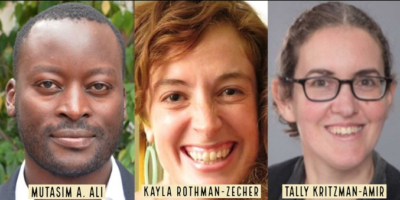
Nile, regions undergoing persecution and oppression. It began when in 2002 and 2003 when the Sudanese government launched a genocidal campaign against ethnic groups in Darfur. Thousands of villages were burned down, their residents displaced, and hundreds of thousands became refugees. These refugees went to many countries. There are over 300,000 in Chad, hundreds of thousands in Cameroon, the Central African Republic, Uganda, and Ethiopia, in addition to Israel. In Eritrea there is no war, but there are grave human rights violations, indefinite detention, military conscription, and disappearances. Currently there are about 30,000 African refugees in Israel, not including children of refuges born in Israel. It is unfortunate that Israel cannot deal with less than 30,000 refugees living within its borders.
The majority of refugees in Israel first went to Egypt and Libya but in 2005 many Sudanese refugees in Egypt were sent back to Sudan, viewed by the Egyptian government as security threats. During a protest demonstration, 29 Sudanese refugees were killed by Egyptian security forces. In Arab nations, detention or deportation was a constant threat, so many refugees tried to cross the Mediterranean into Europe, while others made their way to Israel.
Kayla: Though there are about 30,000 African refugees in Israel now, from 2007 to 2012 as many as 60,000 entered Israel. And in response Israel instituted some pretty terrible policies.
Tally: Although Israel was a signatory to the 1951 refugee convention, the government never thought about non-Jewish refugees. For many years this issue was dormant. Refugees were accepted into Israeli society but outside of the Refugee Convention, simply as demonstrations of goodwill on behalf of Israel. Initially, when the African migration began, Israel didn’t even have a process and a bureaucracy to deal with asylum applications, and relied on the United Nations High Commissioner for Refugees, but since 2009, Israel has taken over the process of interviewing asylum-seekers and making determinations on their cases. However, what hasn’t changed was the philosophical framework that Israel is not an immigration state but, rather, a Jewish state, and therefore, refugees who are not Jewish are not welcome.
Mutasim: We’ve never felt welcomed in Israel. Until the present day there are exclusionary policies preventing refugees from living in certain areas. The Holot detention facility was erected in 2013 and thousands of refugees from Sudan and Eritrea were detained solely to make their lives miserable so that they would choose to leave Israel voluntarily. You can apply for asylum today and you will wait indefinitely, without having the government decide on your asylum claim.
Tally:. Most importantly, in 2013 Israel erected a wall along the Egyptian border, which was the longest continental border with Africa. This is probably the most effective border wall in the whole world because the numbers of people going into Israel dropped to zero. And because it’s near Gaza it is heavily militarized in a way that few countries can do. That’s the first mechanism.
The second mechanism was putting people into immigration detention. When that was challenged in court, Israel created the residency center, which was the same thing, more or less, with a different name. In recent years Israel has tried to transfer people to third countries. It realizes that these people cannot be sent back to their country of origin. What it did instead was to create a third-country agreement very similar to the ones that the US is currently establishing in order to transfer refugees to third countries. But because of political pushback, the efforts to force involuntary deportation to Rwanda and Uganda were stopped.
Furthermore, asylum applications can be pending for a decade or more. Just yesterday I spoke with a woman whose asylum application has been pending for seventeen years. Instead refugees get temporary visas that offer very partial access to rights and have to be constantly renewed. In May 2017, Israel enacted the Deposit Law which imposes an obligation on employers to divert 20% of the salary of asylum seekers to a deposit that’s made available to them when they leave Israel, which of course for many of them is not a real possibility.
On top of all that, there’s also the social exclusion. In many ways asylum seekers are really struggling to integrate into Israeli society, only to find themselves targeted by politicians, most notoriously in 2012 when Miri Regev, the Minister of Cultural Affairs, referred to Sudanese refugees as the cancer in our bodies.
Mutasim: A few days ago, there was a flood in Tel Aviv and the Mayor actually blamed refugees and asylum seekers saying, “The problem with south Tel Aviv is not the infrastructure but the infiltrators.” This was the Mayor of Tel Aviv!
The African Refugees Development Center (ARDC), which I work with, is a community-based organization in which Israelis and asylum seekers come together to confront the arrival of refugees and asylum seekers. To this day the government offers no assistance. With the ARDC, the idea was to offer humanitarian assistance, providing shelter, food, and all essential items, but when they erected the fence in 2012 and no more refugees came, we shifted our mission from offering humanitarian assistance to focusing on how to influence policy; especially, how can we work together with the local residents?
One of the projects that I was really inspired by was Power to Community. The idea was to bring refugees and asylum seekers together with local residents. One thing that we all acknowledge is that the local residents in south Tel Aviv, primarily in the neighborhoods of Hatikva, Neve Sha’anan, Florentin, and Kiryat Shalom, really endure miserable situations, and feel totally ignored and abandoned by the government. We tried to tell the refugees, “Hey, we acknowledge your pain and your suffering and we can work together to address these issues.” Meanwhile the government is doing everything possible to turn the African refugees and Jewish Israelis against each other. With that project we conducted a number of meetings, home visits, and security patrols. It’s limited and didn’t solve all the problems, but at least it was an initiative that brings refugees and local residents together.
I and a few others were able to go to Israeli universities. We weren’t able at first to apply but we managed to get that changed. We created an organization called the African Students Organization and the idea is to help our friends from the community to go to universities. We have dreams to achieve and in fact many of us were involved with issues back home. Education is one way to influence both the situation in Israel and back home.
Kayla: Mutasim was the executive director of the African Refugee Development Center, and Tally served on its board. It provides language classes and a lot of the refugee community speaks fluent Hebrew now, and their children are enrolled in Israeli schools, and higher education is becoming more and more accessible to the refugee community.
Tally: In recent years the Israeli government has had to walk a very fine line between not granting any rights to the refugees and not being portrayed as violators of international law. I think the accumulation of all the exclusionary practices does paint a picture of a country that is evading its obligation under refugee law. But Israel can violate the 1951 refugee convention without real consequences. We’ve seen how people who left Israel and went to Libya either died or found themselves in grave danger.
Kayla: What I think we’ve seen over the past couple of years is that many members of the refugee community, even if they’ve tried to assimilate into Israeli society and can speak Hebrew, don’t see a future for themselves there anymore.
Mutasim: In 2018, there was a deal that was signed between the Israeli government, Netanyahu’s government and the United Nation High Commissioner for Refugees, to halve the number of refugees in Israel and resettle them in third countries. However, it also called for the other half to remain in Israel and receive a durable status to live and work in a dignified way. Unfortunately, the next day Netanyahu canceled the deal because some local residents thought this was too good a deal for the remaining refugees. I really hope that deal will be reinstated. We will see what happens if Israel ever forms a stable government again. I can tell you a lot of the African refugees want to leave Israel. This is not only because of their status but because of the way that they’re being treated, referred to as criminals and rapists and the like.
Kayla: Here are a question from the audience:
I get that right-wing Israeli politicians like to demonize the refugees but how do regular Israelis react to this? Do they buy into the scare tactics and how do the centrist and left-wing parties relate to this issue?
Tally: It depends. Some people do buy into the scare tactics. I also think a lot of people don’t, and without them the attempt in 2018 to deport people to Rwanda and Uganda might have succeeded. It was also a very hopeful and encouraging moment to see how the population of the State of Israel responded. In the protest to the deportation plans we saw tens of thousands of people going out to the streets, marching alongside with asylum seekers against the deportation. But most political parties are avoiding this issue altogether.
Mutasim: Support for the refugee cause has sometimes come from unusual quarters, such as the Ahoti movement and from feminist Mizrahi organizations in South Tel Aviv. Almost 20,000 people came to the protest in February 2018. But I believe the vast majority of Israelis are buying into the government’s policy. Many people are just unwilling to even talk with us. I’ve been working on this for about a decade, but I must say the situation is actually getting worse. People are still being deported “voluntarily.”
Kayla: What is the status of status of children of refugees born in Israel?
Tally: Israel doesn’t have birthright citizenship. Unlike the US, children of non-citizens don’t become citizens just by virtue of being born in Israel. Children of refugees and migrant workers are undocumented, basically. In the case of children of refugees, they are dependent on their parents to file applications, which as we’ve mentioned before, could take 10, 15 years to even be processed. What was seen in the last few months is an attempt to deport children who are undocumented with their families, but that was focused more on the children of immigrant workers, not African refugees.
Another development of the last few days is the decision of the Tel Aviv municipality to open school for the “foreign children,” as they call them, and that school is supposed to be opened on the only park that is still available in South Tel Aviv. Not only is this a decision that suggests deepening or entrenching the segregation in education and sending non-national kids to separate schools but this is also something that has a direct cost for the local residents of South Tel Aviv.
Kayla: David Abraham asks, “Strategically, it seems to me there’s some confusion or ambivalence on playing the Jewish card; based on our own tragic experiences, should we should be generous towards the persecuted?”
Tally: In other words, “never again” for anyone or “never again” just for us? I think the strategic choice of the current Israeli government and its predecessor has been “never again for us,” which means excluding non-Jewish migrants and non-Jewish refugees. To me, that’s the wrong answer.
We are right next to Syria, with everything that Syria is going through. We are right next to Lebanon, which has been shouldering such a significant portion of the responsibility. Jordan, Turkey, all the countries in this region are either in massive turmoil or shouldering much more significant portions of their responsibility towards refugees in the world. Then we have the State of Israel, which currently has just about 30,000 refugees. It’s an economically-stable country, it’s a democracy and yet it’s struggling to provide rights and protections to just 30,000 people.
For me as an Israeli, that’s something that I’m really not proud of. For me as someone whose family has survived the Holocaust, that’s not the lesson we should have learned from this experience.
Mutasim: And even if you have a work permit and right to study at university, you can’t become a citizen of Israel if you’re a refugee and aren’t Jewish. I don’t complain about that because in the end for me, the goal is not to become a citizen, the goal is just to have a safe shelter until I’m able to go back to my home.
Tally: I think a lot of the aspects of Israeli policy are really not unique to Israel. We’ve seen other countries erecting border fences and we’ve seen other countries retaining asylum seekers, but I think there are two things that are different regarding Israel. What makes Israel stand out is the fact that it applies all exclusionary mechanisms simultaneously; a border fence, immigration detention, third country agreements, and very low recognition rates, combined with the economic exclusion, the 20% salary deduction, the bureaucratic hurdles that people have to cross, and strong xenophobic language. All of those together are what really make Israel stand out, the combination of factors. I do have to say, though, that the Israeli Supreme Court has been quite active in pushing back against some of these policies. But this has helped lead to a lot of questioning of the legitimacy of the judicial system because of the many times that the Supreme Court has struck down discriminatory policies towards asylum seekers.
Kayla: Is there an alliance or connection between the refugees’ struggle and that of migrant workers from the Philippines and other countries in Israel?
Mutasim: Unfortunately, no. We claim refugee status because we are fleeing persecution, while migrant workers have work permits and come to Israel holding valid visas. Most of the refugees and asylum seekers do not have work permits; rather, they have conditional release visas that they have to renew every month or two. Of course, the ways they are treated and suffer discrimination are in some ways similar to ours.
Jews in North America made a gigantic difference, especially during the deportation campaign. Your involvement makes a big difference. One of the reasons why we do not see active deportation of refugees and asylum seekers is because of these campaigns. Your engagement with this issue for the good of Israel but also for the good of asylum seekers can make a big difference. Thank you so much.
Tally: I think this is one issue that is really easy to resolve. It’s a very small population that Israel could easily take in and accept and could actually benefit from. A lot of asylum seekers could really contribute to Israeli society if given the chance.
Kayla: Thank you all for joining us for this Conversation with Israel and Palestine. I especially want to thank our panelists, Mutasim Ali and Tally Kritzman-Amir.
Thanks to Peter Eisenstein, a member of Partners’ Board of Directors, for editing and condensing this discussion. The full video is available on the Partners’ website here.
—–
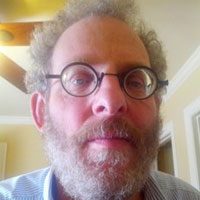
Peter Eisenstadt is an independent historian who lives in Clemson, South Carolina. He is completing a biography of the African-American religious thinker Howard Thurman, to be published by the University of Virginia Press

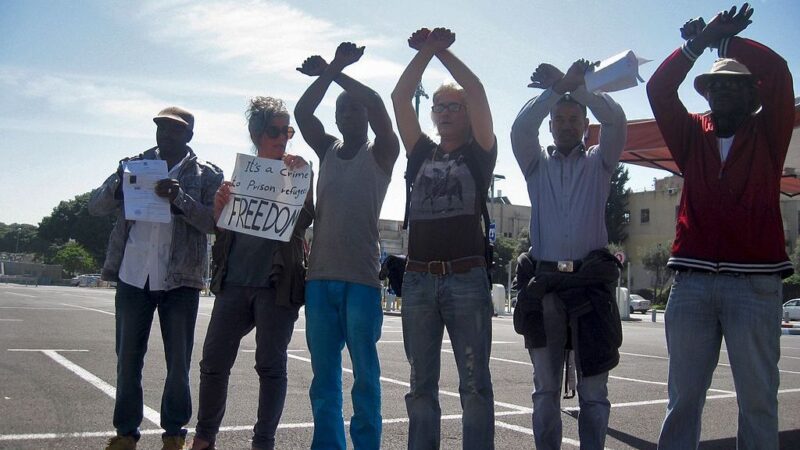

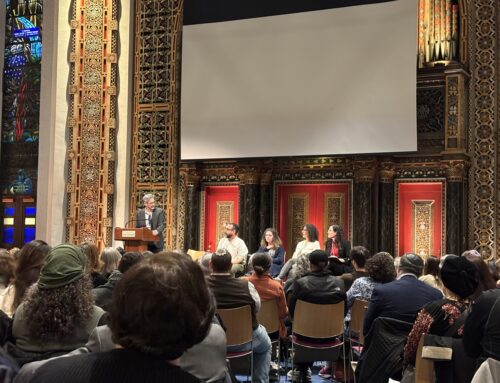


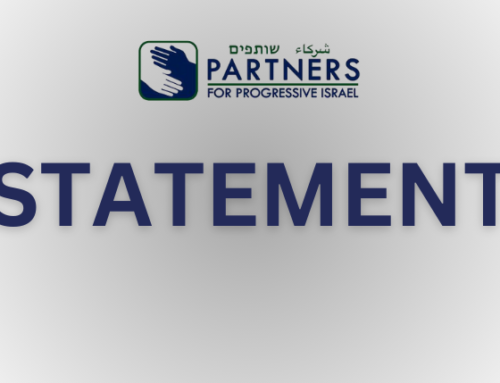
Leave A Comment